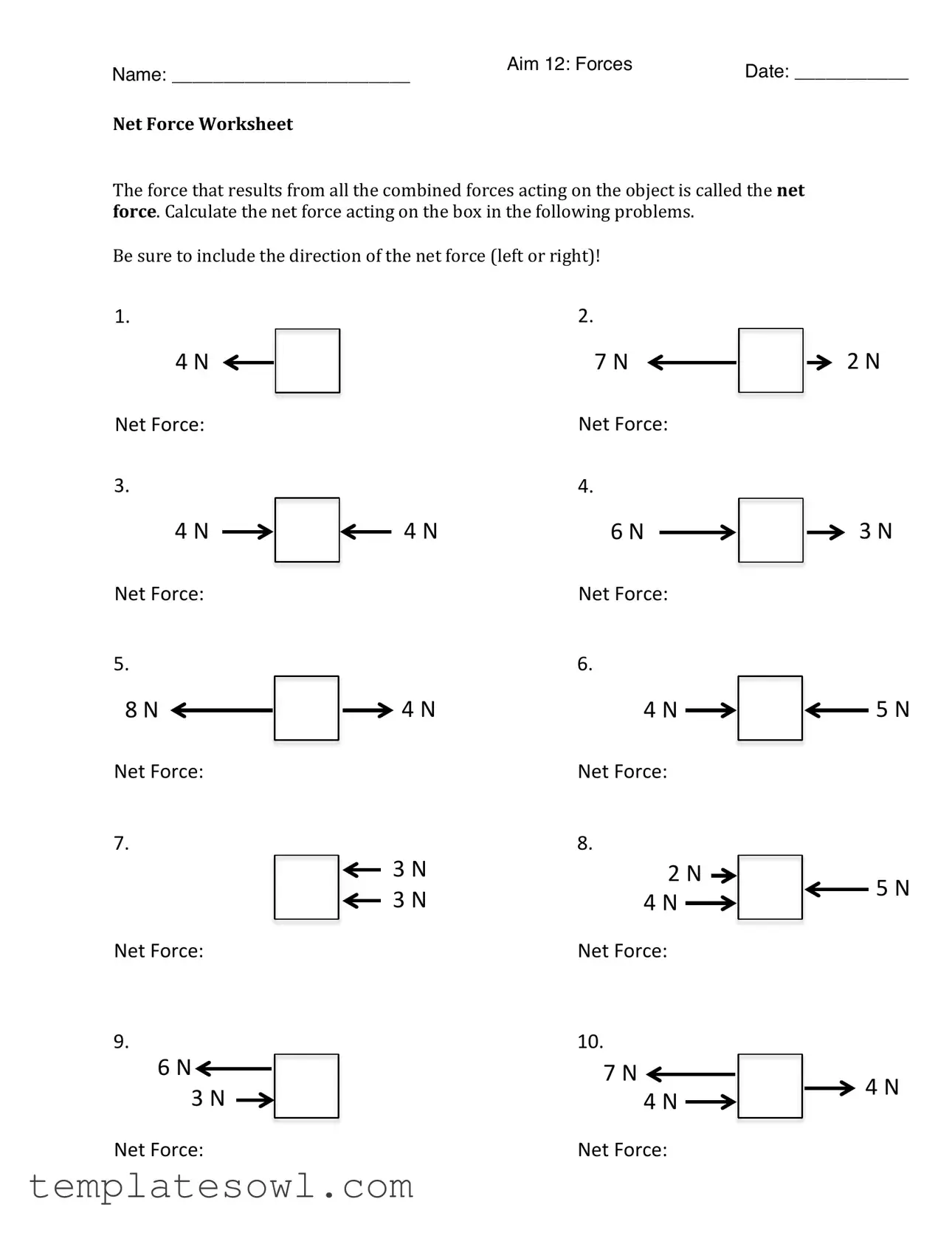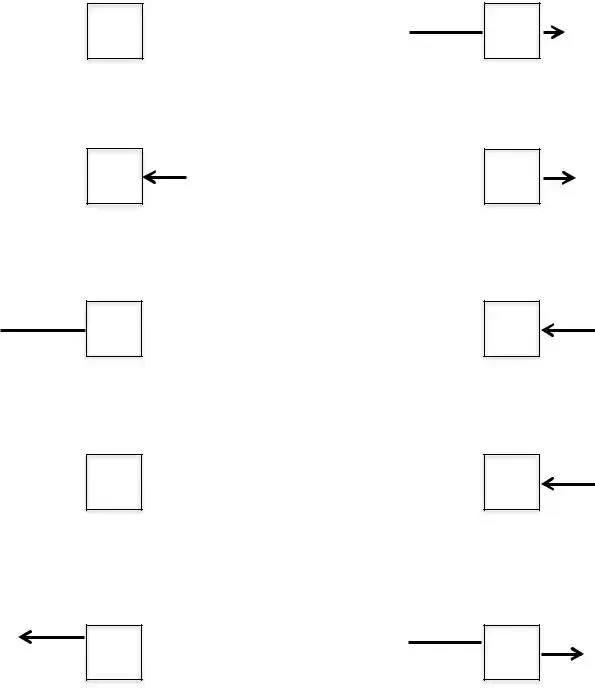What is the purpose of the Net Force Worksheet?
The Net Force Worksheet is designed to help students understand the concept of net force by solving various scenarios involving forces acting on an object. It guides students in calculating the net force by combining different forces, both pulling and pushing, and emphasizes the direction of the resulting force. By working through the problems, students can gain clarity on how forces interact and affect motion.
How do I calculate the net force on the worksheet?
To calculate the net force, you will add up the forces acting in the same direction and subtract the forces acting in the opposite direction. It’s essential to include the direction (left or right) in your calculations. For example, if you have two forces of 6 N east and 4 N east, the net force would be 10 N east. Make sure to show your work for each problem to demonstrate your understanding of the calculations.
What should I do if the forces are acting in opposite directions?
If the forces are acting in opposite directions, you will need to subtract one force from the other to find the net force. For example, in a tug-of-war scenario where one side pulls with 50 N to the left and the other side pulls with 45 N to the right, you would calculate the net force as 50 N - 45 N = 5 N to the left. Don't forget to identify which direction the net force is acting in your answer!
Can you explain balanced and unbalanced forces?
Balanced forces occur when two forces acting on an object are equal in size and opposite in direction, resulting in no change in motion. For example, if a person is holding a book steady in their hand, the force of gravity pulling the book down is balanced by the upward force from their hand. On the other hand, unbalanced forces happen when one force is greater than the other, causing a change in motion. In this case, the object will accelerate in the direction of the net force.
How do I illustrate balanced and unbalanced forces on the worksheet?
You are asked to draw diagrams representing both balanced and unbalanced forces on the worksheet. For balanced forces, you might draw an object, such as a bird’s nest in a tree, with arrows showing equal and opposite forces acting on it. For unbalanced forces, illustrate the forces with arrows of different lengths, indicating that one force is greater than the other, which will change the object’s motion. Showing both scenarios helps to visually understand these concepts.
Why is it important to show my work on the problems?
Showing your work is crucial because it demonstrates your understanding of the steps involved in solving force problems. It allows teachers to see your thought process and identify any misunderstandings. Additionally, it helps you track your calculations and ensures you arrived at the correct conclusion. This practice fosters better learning and deeper comprehension of physics concepts related to forces.






 0&!&
0&!& /&!&
/&!&  /&!&
/&!&


 0&!&
0&!&
 0&!&
0&!&